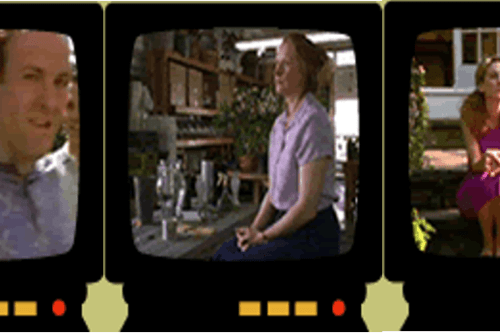Gay men understand what’s important—clothes, compliments, and cocks. —Samantha, Sex and the City
Fabulousness—embodied in a web of cultural markers that signify status, wealth, style, confidence, attitude, glitter, and panache against the banal backdrop of everyday existence—plays a central role in the structure and success of Sex and the City. The attainment of fabulousness opens up possibilities of gender performance beyond conventional heteronormative routes of marriage, children, and monogamous partnering, lending credence to an independent, career-driven, self-motivated existence as an enviable lifestyle, though not without its exclusions. Further, the term’s subversive origins as a form of cultural capital, most notably among drag queens of color, allows audiences to disidentify with a level of status specifically meant for the rich, white, largely straight characters on the show. José Esteban Muñoz defines disidentification as “the survival strategies the minority subject practices in order to negotiate a phobic majoritarian public sphere that continuously elides or punishes” subjects who fail to conform to normative culture (Muñoz: 4). For nonwhite, queer, and poor audiences, disidentification strategically reclaims exclusionary, normative representations not meant for them/us as their/our own through affective connection and identification with certain facets of a character or narrative while simultaneously disavowing others. Yet disidentification with mainstream ideals can also occur within the diegesis of a show; the women of Sex and the City could loosely be described as constituting one such minority group, as they consciously disidentify with bourgeois family values in favor of the dazzling, idealized notion of fabulousness embodied in their gay sidekicks. While certainly upholding and perpetuating many strongholds of normative US culture—money, consumerism, heteronormativity, whiteness—the characters of Sex and the City also stray from certain conventions of femininity and tradition in favor of attaining this fabulous lifestyle and persona. However, the camp concept of fabulousness must be understood as a raced and classed construct, borrowed from the “flamboyance” of black queer culture and relying on the economic power of high-end consumerism.
From 1980s drag balls in the boroughs of New York to the increasing media coverage of drag style in the 1990s to Madonna’s infamous co-optation of vogueing, queer culture has been transformed from marginal to mainstream in often unacknowledged ways. As Dick Hebdige notes, oppositional underground culture is rapidly appropriated by dominant society as capitalism turns subculture into style. In this view, what began as a survival strategy for poor queer people of color eventually morphs into sly and discreet markers of fabulousness for the rich, white, heteronormative characters on Sex and the City. While gender and sexuality frequently shape the story lines, race is elided and obscured; the main characters’ whiteness is read as outside issues of race. Fabulousness exists merely as a free-floating marker of cultural capital, obscuring its subversive origins and capitalizing on a raced and classed cultural history without acknowledging the fierce politics behind it. In turn, a watered-down and consumer-driven version of fabulousness comes to serve the interests of assimilation rather than disidentification.
Considering the long and well-known tradition of “writing gay, casting straight,” I have to wonder, though, whether Sex and the City is actually about four gay men, in which case the line between disidentification and assimilation blurs. As cultural critic Stephen Maddison points out, this code-switching phenomenon has played out with many prominent gay writers, notably seen in Tennessee Williams’s character Blanche in A Streetcar Named Desire (Maddison). Sex and the City presents a compelling case for this textual gender bending. The show’s writers and creators, mainly gay men, have seemingly created four gay male characters in the guise of heterosexual women. If Carrie, Samantha, Charlotte, and Miranda are indeed “in drag,” how might different audiences disidentify with certain characters and sexualized representations? Which aspects of the show would resonate and which ones would necessarily be disavowed? The portrayal of messy, uncontainable female characters in Sex and the City and other camp representations speaks to the instability of gender, opening up the possibility of a disidentificatory reading, in which the gay subtext of a character like Samantha becomes queerer than overtly homosexual characters like the stereotypically effeminate Stanford. Further, Stanford’s drive for assimilation into heteronormative society as both the bearer of fabulousness and as perpetual sidekick to his “fag hag” friend, Carrie, perhaps suggests a compelling case for “writing straight, casting gay.”



